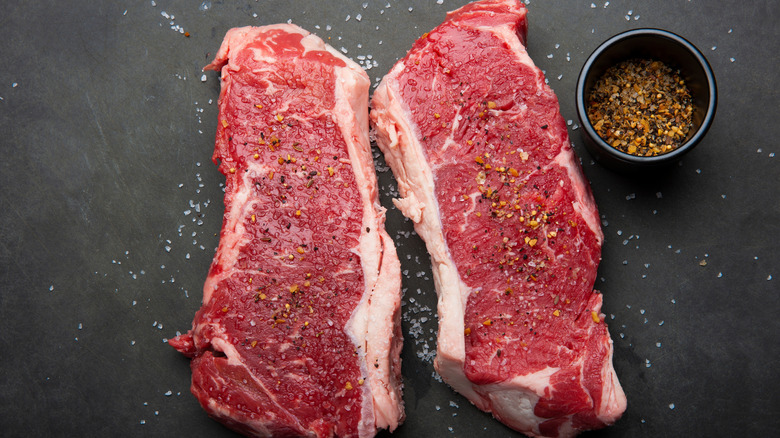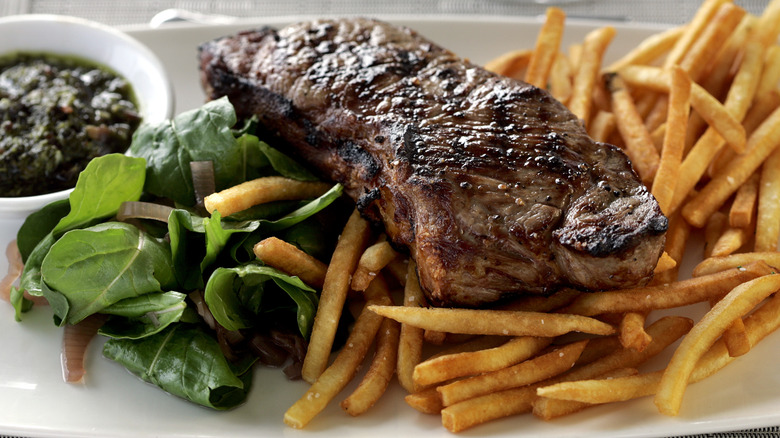Faux-Filet Is The Tender Cut Of Steak From France You Should Know About
Among France's gastronomic contributions is one of the best cuts of steak known as the faux-filet. Because French butchery techniques — and the cuts of meat resulting from them — are different from those in America, the faux-filet does not have an exact English equivalent. Many Gallic butcher's diagrams show it being sandwiched between the entrecôte (our rib-eye) and the 'rumsteck' (our rump steak). In some diagrams, the 'aloyau' (which translates as sirloin) comes between the faux-filet and the entrecôte. Confusing as this may be, using American butchering cuts, it is cut from the cow's upper sirloin section, thus its closest equivalent is the sirloin steak.
Translated as 'false filet,' the faux-filet got its name because it is located in an area close to, but not the same as, the tenderloin ('filet' in French). Still, don't let the word 'faux' in the name deter you. If you consider exactly where on the cow the faux-filet comes from, it's much easier to understand its most alluring qualities. Marrying the well-marbled juiciness of the meatier cuts like rib-eye with the uber-lean-but-buttery-soft tenderloin creates a steak that is a little bit of both. If you enjoy that delectable combination of rich, juicy, and tender, then cuts like the faux-filet should be your go-to. While you may not be able to find the perfect cut of this steak at the store, your local butcher may be able to source it for you.
Ways to cook your faux-filet
As with all of the more marbled cuts, the goal in preparing them is to preserve the moist, tender, flavorful qualities that are naturally produced as the marbling melts down when they are cooked. High heat is the answer. This requires attention to detail though, in order to reach that ideal balance of seared exterior and juicy interior. Predictably, overcooking will destroy this, or any, cut of steak. Most American chefs suggest shooting for rare, which is between 120 to 125 degrees Fahrenheit. Resting the steak after it is cooked will bring the temperature to 125 degrees and 130 degrees. This results in a steak that has a warm interior, a red color, and a juicy texture.
Two quick-cooking methods — pan-searing and grilling — both achieve the result you're looking for: a solid sear or char that seals in the juices and meaty flavor. Pan-searing is a common French technique used with steak where the meat is flash-cooked over high heat with either butter or oil. This method can be complemented by a variety of steak sauces from the classic French bordelaise to Argentina's chimichurri.
A more American treatment that also showcases the faux-filet's charms is grilling. As with a proper pan-sear, successful grilling requires you to avoid the biggest mistake beginners make — not having a hot enough grill. Whether you want the charred, smoky character of the grill or the crustier caramelization of the pan, the faux-filet is ideal for both.


